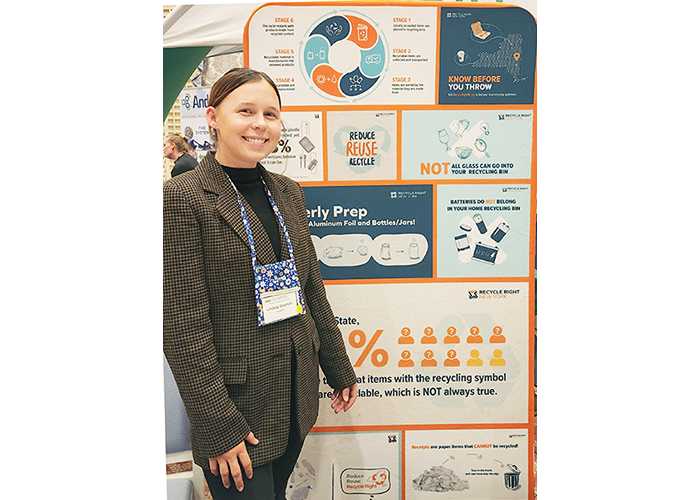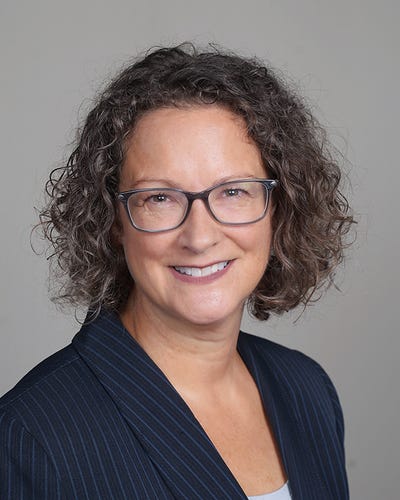Keys to Unlock Package Recycling
Four highlights for packaging professionals emerged from the solutions-driven New York State Association for Reduction, Reuse, and Recycling conference.
November 27, 2023

As the world's 10th largest economy, the state of New York has a leadership role in achieving more sustainable packaging. At the 34th New York State Association for Reduction, Reuse, and Recycling (NYSAR3) conference held November 14-16, policy generators and stakeholders shared viable solutions in more than 25 panels and workshops. Here are the top four highlights.
1. Extended Producer Responsibility (EPR) can best succeed by a state focus.
Governor Hochul and Senators Rachel May and Pete Harckham introduced EPR bills S1064 and S4246 in New York. Critically, the bill exempts food packaging from recycled content targets. Assemblymember Anna Kells and Senator Brian Kavanagh highlighted that state problem-solving and consistent state bills would ease the way for US-wide EPR. States play a pivotal role in overcoming obstacles, defining incentives to drive successful compliance, enforcement, data collecting, consumer awareness, global supply chain management, guaranteeing suitable infrastructure, and maximizing efficiency in rural and urban settings.
2. The marriage of artificial intelligence and robotics is supportive.
Efficient sorting of mixed stream recyclables is needed. And an accurate record of what recyclables are handled by facilities helps define policy and ensure compliance. Automated sorting eases labor shortages and improves accuracy.
"Our systems can recognize and sort different polymers, types of paper, metals, and glass, as well as other composite packaging within a mixed recycle stream," said Jonathan Levy, director of government relations at AMP Robotics. “In 2023, our AI identified and categorized more than 75 billion individual objects. The use of AI and robotics is a promising alternative to human sortation. Notably, creating jobs in designing and managing AI and robotics systems raises earnings and improves the working environment.”

Lindsay Eberhart, Outreach Program Coordinator, SU-CSCS, with signage connected to the Recycle Right NY campaign.
3. Clear and positive information drives recycling.
The deliberate, positive character of the Recycle Right NY campaign has resulted in a consistent message to consumers about how to recycle in their location, letting them know that they are not alone in need of recycling help.
"Over 140 stakeholders, ranging from waste haulers to academics, have helped guide our program in determining the colors, images, ideas for content, and materials required to help consumers learn what is required to Recycle Right in New York," said Melissa Young, Director of the Syracuse University Center for Sustainable Community Solutions (SU-CSCS).
4. Substituting plastics requires multifaceted consideration.
In a "plastics substitutes" panel moderated by Kate Walker, Executive Director of the New York Center for Sustainable Materials Managementt (CSSM), Mark Lichtenstein, Principal Investigator of CSSM, defined the Center's critical role in bringing together industry professionals in New York to rethink materials management.
Lichtenstein emphasized the importance of shifting the focus away from the "distraction of whether plastics can be recycled" and toward minimizing single-use plastics.
Life Cycle Impact tools such as PIP360, Piqet, and EcoImpact/Compass can be adapted to assess the local impact of packaging.
Kweku Attafuah-Wadee, Research Assistant at the CSSM and a panelist highlighted that "we need to understand the many facets of substituting plastics with other materials for successful conversion to plastic substitutes. These aspects include consumer awareness, economic growth, employment, food security, socioeconomic and infrastructure expenses, and manufacturing and environmental ramifications."
Bayesian modeling allows for consideration of and comprehensive decision-making about adopting plastic replacements. Solutions such as shifting the required barriers from primary to secondary reusable packaging reduce the amount of plastic packaging that needs to be handled within Municipal Solid Waste systems.
Claire Sand has 30+ years of experience in industry and academia. She’s owner of Packaging Technology and Research and Gazelle Mobile Packaging and an Adjunct Professor, CalPoly, Michigan State University, and the University of Minnesota. You can reach her at www.packagingtechnologyandresearch.com or [email protected].
About the Author(s)
You May Also Like




